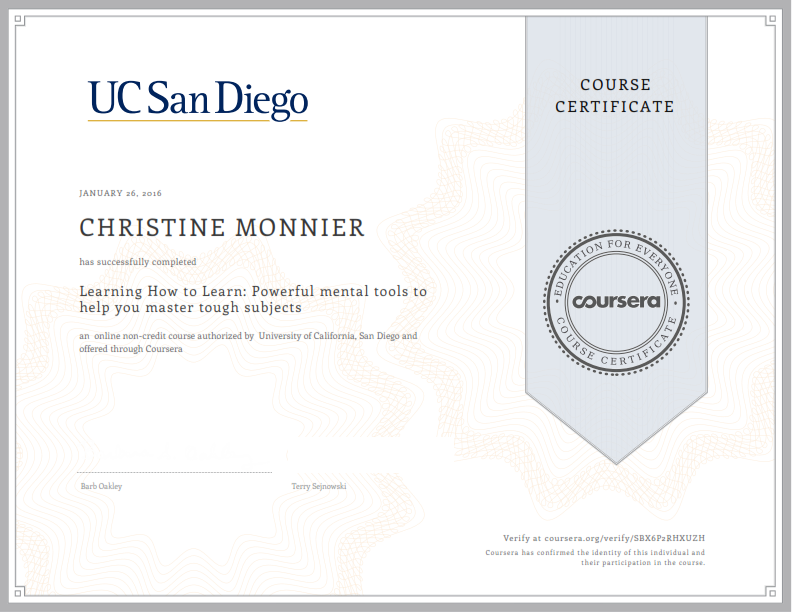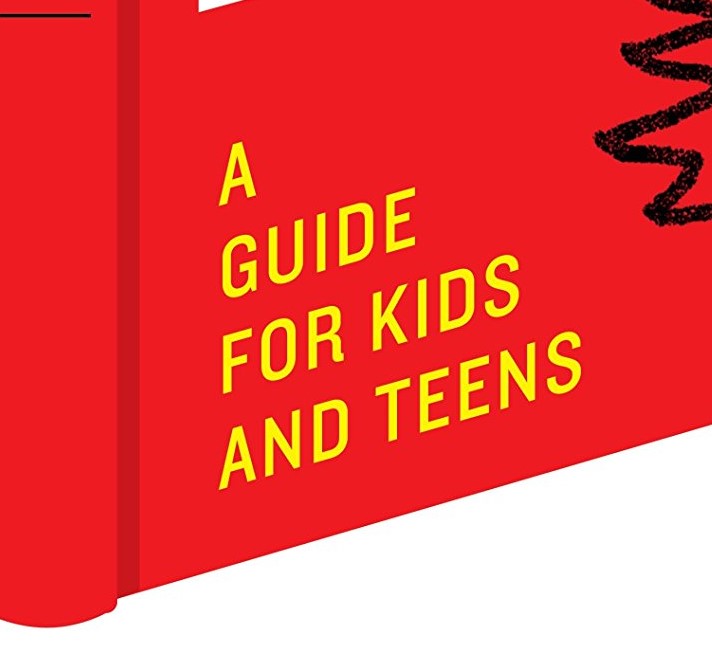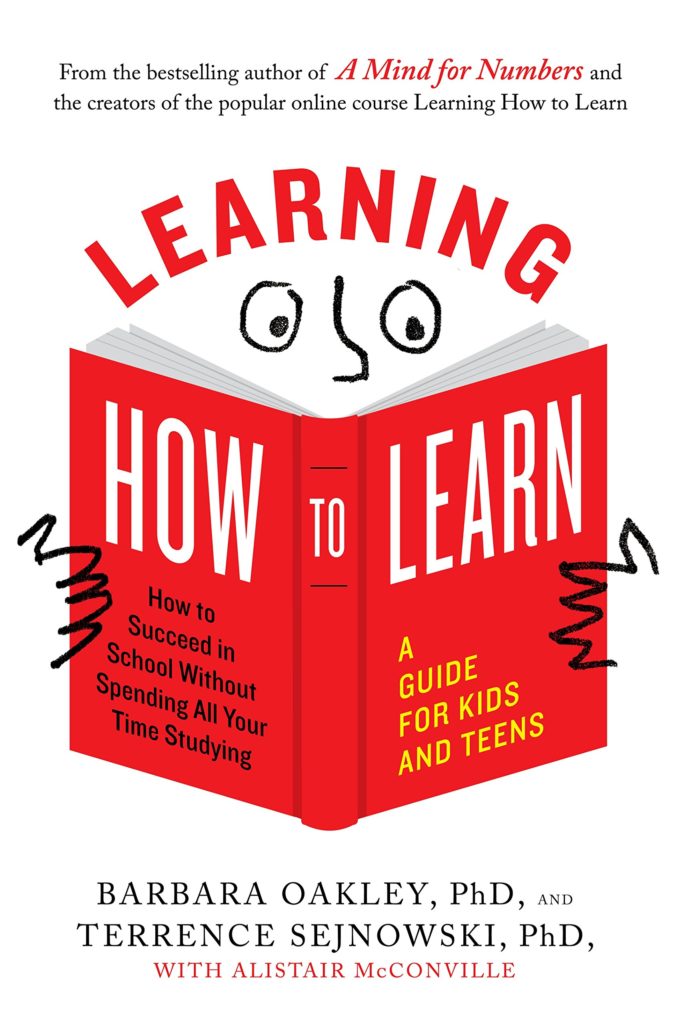Back in the days of the Great MOOC Craze [periodic reminder that there are no good reasons to jump on every Gates-funded bandwagon], I took a MOOC titled Learning How to Learn. I can honestly say that it completely changed my perspective on how I do my job, teaching, grading, designing.
I passed it too! I can prove it:

See? At the time, I highly recommended it and I know a few people at the college took it. Coursera still runs it. I think it’s one of their most popular offerings. As I said, it really got me into pedagogy, the science of learning (a bit of neuroscience too), and the scholarship of teaching and learning.
So, when I saw that the MOOC professors, Barbara Oakley and Terrence Sejnowski had written a book of the same title, I jumped on it.
The book arrived and I realized… wait a minute!

Imagine horror movie-style screaming on my part.

This is the actual book, with COD Library link. As the College made the safe decision to keep all instruction online for the summer (who knows how things will be in August), I thought maybe it’s time to switch gears from remote instruction as last resort to finish the term as best we can, to fully online instruction from beginning to end.
This is a different focus than what we have been doing in the past few weeks. Maybe many of us are good with what we have done so far to allow our students to meet our course objectives this term, but let’s face it, this was an emergency measure, with limited time to prepare and think about online design and pedagogy.
Maybe there is a little time between now and the beginning of Summer session(s) to take a breath and think about pedagogy, what good learning practice is and how to communicate it to our students, many of whom will be in online classes not by choice but by default, and out of necessity.
So how about back to the basics.
Ok then. Over the weekend, I decided to pick up the book and see whether what was in there could help. And boy was I wrong about my horror movie screaming. This is a terrific and delighful book that everyone should read. It’s quick, I started on Friday night and finished on Sunday afternoon interleaving with regular grading (see what I did there?). And because it’s for *gasp* kids and teens, it has illustrations!
Maybe I didn’t say it loud enough: EVERYONE SHOULD READ IT. There.
After all, with a lot of students (and instructors!) forced by circumstances into online environments, shouldn’t we make sure that both we and our students are especially mindful about good study practices? (The answer is yes).
I am sure many of us already know that students have bad study habits. That is, they use ways of studying that research shows are not only not helpful but actually detrimental to learning. But this is how they’ve always studied and those habits die hard. At the same time, I will cop to being not entirely well-versed in good study habits before I completed the Learning How To Learn MOOC.
So, for those of us who have taken the MOOC, the content will not be new and we all remember learning to do the pomodoro (there are apps for that!), to use the memory palace, and how, physiologically, sleep and exercise amplify our ability to learn. It is all there: how memory works (working and long-term memory), how to use the focus v. diffuse brain modes (you need both), how to encode information in long-term memory, etc. Except, it is explained at a highly understandable (but not patronizing) level, with entertaining stories, and helpful analogies. No one will forget the working memory octopus.
The challenges, for all of us, is how to design courses that nudge students to engage in the good study habits, while in an environment that is not chosen, and may be unfamiliar. I would argue this is worth it.
Addendum: for those of you locked up at home with your kids, give them the book to read. It contains a bunch of activities and worksheets to complete as kids and teens acquaint themselves with effective study habits. And no, I have no idea how young is too young for it. You guys figure it out! 🙂
Anyhoo, as I said, read the book!


